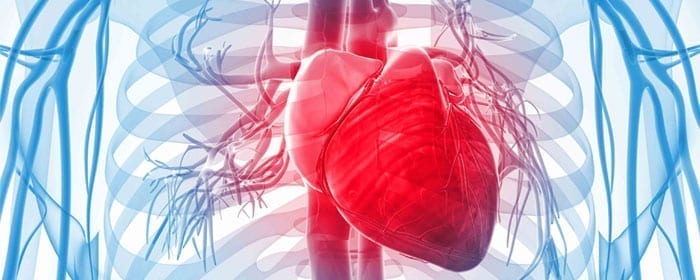
by admin | Aug 14, 2018 | Bone Marrow, Stem Cell Research
Colitis is inflammation of the colon, also known as the large intestine. Several things can cause colitis such as infection, medication, ischemia, or chronic inflammatory bowel disease. Inflammatory bowel diseases that affect the colon, such as ulcerative colitis or Crohn’s disease, are particularly challenging for patients. It is a chronic disease that causes cramping pain, bloody diarrhea, weight loss, fatigue, and many other chronic, challenging symptoms.
Since ulcerative colitis does not occur naturally in animals, researchers sometimes use an experimental form of colitis to mimic the disease seen in humans. This experimental colitis serves as a model to investigate treatments for inflammatory bowel disease. Essentially, researchers create a situation in which mice develop a condition that looks very much like ulcerative colitis. They develop inflammation in the large intestine, along with signs of oxidative stress and cell death. Conversely, treatments for ulcerative colitis reduce or prevent inflammation, oxidative stress, and cell death in the colon of these experimental mice.
Researchers used this model of experimental colitis to study the effect of bone marrow stem cells as a treatment for colitis. More specifically, they tested the effects of a certain part of bone marrow stem cells called extracellular vesicles. Extracellular vesicles are small spheres that containing various beneficial substances. Stem cells release these vesicles into the body. A single stem cell can release hundreds of extracellular vesicles. In fact, it is the extracellular vesicles that are believed to contain many of the useful substances that are released by bone marrow stem cells such as proteins, lipids, and nucleic acids. These substances can precisely target sick and damaged cells in the body and repair them.
Impressively, when researchers used extracellular vesicles derived from bone marrow stem cells to treat animals with experimental colitis, they observed rather extraordinary results. These vesicles protected the intestines from colitis damage. Untreated animals had severely damaged intestines when viewed under a microscope, but animals treated with extracellular vesicles had nearly normal looking intestines. Treatment also substantially reduced levels of cytokines related to oxidative stress, such as IL-1β. Extracellular vesicles derived from bone marrow stem cells also apparently blocked the intestinal cells’ ability to undergo cell suicide (apoptosis).
Taken together, these results strongly suggest that mesenchymal stem cells from bone marrow, specifically the extracellular vesicles contained within them, can dramatically improve experimental colitis. While more research is needed, this study suggests that these stem cell products could one day be a useful treatment for inflammatory bowel diseases, such as ulcerative colitis and inflammatory bowel disease.

by admin | Aug 6, 2018 | Studies, Stem Cell Research
Silicosis, which is also known as miner’s phthisis, potter’s rot grinder’s asthma, potter’s rot, is an occupational disease of the lungs that is caused by the inhalation of a specific type of dust called crystalline silica dust. The disease causes inflammation and scarring in the lungs that leads to the formation of lesions. The disease has been increasing in incidence in developing countries in recent years and unfortunately cannot be fully cured.
A recent study, published in Stem Cell Research & Therapy, explored, for the first time, the potential to intervene in processes associated with silicosis. Stem cell therapy has been used to address inflammation and the resulting tissue damage. Mesenchymal stem cells have been applied to other occupational conditions as well. The researchers hypothesized that adipose-derived mesenchymal stem cells would improve pulmonary fibrosis by reducing inflammation.
Through their study, they found that using these adipose-derived mesenchymal stem cells in silicosis did indeed lead to a remissive effect with regard to pulmonary fibrosis. Further, they found that this occurred by reducing inflammation by modifying protein certain cellular pathways that decreased the expression of problematic proteins.
While this data is preliminary, they show the potential promise of stem cells in the therapeutic intervention of silicosis. Future studies will help researchers and clinicians better understand how stem cells can be used to combat the pulmonary fibrosis associated with silicosis, as well as how they can be used to combat other occupational diseases.

by admin | Apr 30, 2018 | Stem Cell Research
There is no effective cure currently available for inflammatory skin disorders. Because of their ability to impact the immune system and thereby modify inflammatory processes, mesenchymal stem cells offer a promising foundation for developing a treatment for inflammatory skin disorders. A recent review published in the International Journal of Molecular Science described the evidence to date that supports the use of mesenchymal stem cells in the treatment of these skin disorders.
According to the authors of the review, their previous work in both clinical and preclinical settings has shown that mesenchymal stem cells are effective in the treatment of one specific major inflammatory skin disease, atopic dermatitis. The authors note that other researchers have also found similar results and argue that these consistent findings suggest that mesenchymal stem cells would likely be useful in treating other types of inflammatory dermatosis.
One of the most promising observations related to mesenchymal stem cells and inflammatory skin disorders are the anti-inflammatory effect that mesenchymal stem cells tend to have when implanted. Given that implantation of foreign substances tends to itself enhance inflammation, the reduction in inflammation that is seen following the transplant of mesenchymal stem cells is an impressive illustration of the power of these cells’ anti-inflammatory impact. Based on the research, these cells are able to combat inflammation by modifying activity in the cells of the immune system that cause inflammation.
The authors also point to other ways that mesenchymal stem cells could be used to treat inflammatory skin disorders, such as cell priming. Cell priming refers to the introduction of cells of the immune system to specific antigens so that an immune response will later occur when those cells are re-exposed to the same antigens. This process happens organically within the immune system but can also be used strategically in medicine to modify immune responses.
Based on the evidence put forth in this review, there is substantial evidence to support further exploration of the use of mesenchymal stem cells to treat inflammatory skin conditions. Future research will help scientists and clinicians determine how best to use these cells to improve quality of life for patients with each of these types of skin conditions.

by admin | Mar 26, 2018 | Stem Cell Research
Therapies using stem cells are becoming more and more popular over time, and research is helping to clarify how these types of therapies can help patients. A new review published this year in the Journal of Cosmetic and Laser Therapy has provided a comprehensive description of the ways stem cells may be used for plastic and cosmetic surgeries.
Though many different stem cell types have been investigated for their potential to help achieve desired aesthetic results through plastic and cosmetic surgeries, adipose-derived mesenchymal stem cells appear to be the most promising, based on current research. These types of stem cells are known to produce proteins that become deficient during aging and that are characteristic of youthful, undamaged skin.
Studies have shown that adipose-derived mesenchymal stem cells can improve the thickness of the skin and increase cellular proliferation and differentiation. These features are not only beneficial for helping with voluntary cosmetic procedures but can also help with wound healing, scar remodeling, fat grafting, and local tissue ischemia.
Adipose tissue offers advantages over other tissues that can provide stem cells, such as bone marrow. For instance, it is easier to retrieve stem cells from adipose tissue than from many other tissues. The cells from adipose tissue also tend not to have to be expanded within a lab, so they can often be used at the same time that they are extracted. This feature of adipose-derived mesenchymal stem cells makes them convenient to use and can reduce the pain and recovery time patients must endure when undergoing cell-based therapies.
Over time, researchers are likely to recognize the relative advantages of different types of stem cells for cosmetic and plastic surgery purposes. However, at this point, adipose-derived mesenchymal stem cells appear to provide the greatest opportunity to improve outcomes in these types of procedures.
Find out why Mesenchymal stem cells have regenerative potential by clicking here.

by admin | Mar 20, 2018 | Heart Failure, Stem Cell Research
A recent study, published in Circulation Research, has shown how umbilical cord mesenchymal stem cells may help patients who suffer from heart failure. The researchers observed patients with heart failure that was chronic and stable and that presented with reduced ejection fraction. Ejection fraction refers to the percentage of blood that leaves the heart each time the heart contracts and is normally 55% or higher. A reduced ejection fraction can indicate weakness, damage, or other problems.
In their investigation, the scientists aimed to evaluate whether infusing umbilical cord mesenchymal stem cells in this group of heart failure patients is safe – and whether the cells could improve any of the clinical features of heart failure in these patients. To do this, they infused 15 patients with umbilical cord mesenchymal stem cells and used a placebo in 15 other patients. They then tested patients for adverse side effects on the day they underwent infusions, as well as 15 and 90 days after the procedure.
None of the patients who underwent mesenchymal stem cell infusions exhibited adverse side effects over the period of time in which they were observed. Additionally, none of the patients tested positive for antibodies against the stem cells, meaning that the patients’ immune systems were not negatively reacting to the infusions. Based on these results, the researchers concluded that the mesenchymal stem cell transplants were safe for this group of heart failure patients.
The researchers also tested the patients’ cardiac function and quality of life 3, 6, and 12 months after the mesenchymal stem cell infusions. To do so, the scientists used imaging to look at the heart, employed ejection fraction level tests, and implemented what are known as the New York Heart Association functional class and Minnesota Living with Heart Failure Questionnaire.
The scientists’ tests showed that ejection fraction increased in the patients who had undergone mesenchymal stem cell infusions, with the most significant increase apparent at 6-month post-infusion. The patients who had received the placebo treatment, on the other hand, did not show any change in ejection fraction. Functional status and quality of life were also better because of mesenchymal stem cell infusion than placebo. Future studies will help us better understand how we can use these cells to help those with heart failure.
Learn about the regenerative potential of Mesenchymal stem cells here.






 St. Petersburg, Florida
St. Petersburg, Florida
